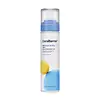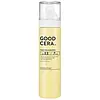What's inside
What's inside
 Key Ingredients
Key Ingredients

 Benefits
Benefits

 Concerns
Concerns

 Ingredients Side-by-side
Ingredients Side-by-side

Water
Skin Conditioning2,3-Butanediol
HumectantDiglycerin
HumectantMethylpropanediol
SolventPentylene Glycol
Skin ConditioningGlycerin
HumectantCeramide NP
Skin ConditioningCeramide AP
Skin ConditioningCeramide As
Skin ConditioningCeramide Ng
Skin ConditioningBeta-Sitosterol
Emulsion StabilisingCeramide EOP
Skin ConditioningPortulaca Oleracea Extract
Skin ConditioningLimnanthes Alba Seed Oil
Skin ConditioningHydrogenated Lecithin
EmulsifyingCitrus Aurantium Bergamia Fruit Oil
MaskingBetula Platyphylla Japonica Juice
Skin ConditioningLavandula Angustifolia Oil
MaskingMatricaria Recutita Flower Oil
PerfumingOrange Roughy Oil
Skin ConditioningLemongrass Oil
Lilium Speciosum Flower Oil
MaskingSimmondsia Chinensis Seed Oil
EmollientCarthamus Tinctorius Seed Oil
MaskingOctyldodeceth-16
EmulsifyingPolyglyceryl-10 Stearate
Skin ConditioningSodium Citrate
BufferingHydroxyacetophenone
AntioxidantEthylhexylglycerin
Skin ConditioningCitric Acid
BufferingCarbon Dioxide
Caprylic/Capric Triglyceride
MaskingDisodium EDTA
Dipropylene Glycol
Humectant1,2-Hexanediol
Skin ConditioningGlyceryl Glucoside
HumectantSucrose Stearate
EmollientGlycosphingolipids
EmollientLinoleic Acid
CleansingLimonene
PerfumingCitronellol
PerfumingWater, 2,3-Butanediol, Diglycerin, Methylpropanediol, Pentylene Glycol, Glycerin, Ceramide NP, Ceramide AP, Ceramide As, Ceramide Ng, Beta-Sitosterol, Ceramide EOP, Portulaca Oleracea Extract, Limnanthes Alba Seed Oil, Hydrogenated Lecithin, Citrus Aurantium Bergamia Fruit Oil, Betula Platyphylla Japonica Juice, Lavandula Angustifolia Oil, Matricaria Recutita Flower Oil, Orange Roughy Oil, Lemongrass Oil, Lilium Speciosum Flower Oil, Simmondsia Chinensis Seed Oil, Carthamus Tinctorius Seed Oil, Octyldodeceth-16, Polyglyceryl-10 Stearate, Sodium Citrate, Hydroxyacetophenone, Ethylhexylglycerin, Citric Acid, Carbon Dioxide, Caprylic/Capric Triglyceride, Disodium EDTA, Dipropylene Glycol, 1,2-Hexanediol, Glyceryl Glucoside, Sucrose Stearate, Glycosphingolipids, Linoleic Acid, Limonene, Citronellol
Water
Skin ConditioningMethylpropanediol
SolventPentylene Glycol
Skin ConditioningGlycerin
HumectantDiphenyl Dimethicone
EmollientTriethylhexanoin
MaskingPolyglyceryl-10 Myristate
Skin ConditioningXanthan Gum
EmulsifyingAmaranthus Caudatus Seed Extract
Skin ConditioningUlmus Davidiana Root Extract
Skin ConditioningCentella Asiatica Extract
CleansingFicus Carica Fruit Extract
HumectantBacillus Ferment
Skin ConditioningEthylhexylglycerin
Skin ConditioningSodium Citrate
BufferingHydrogenated Lecithin
EmulsifyingCarbomer
Emulsion StabilisingCitric Acid
BufferingDisodium EDTA
Dipropylene Glycol
HumectantButylene Glycol
HumectantDecyl Glucoside
CleansingCitrus Aurantium Bergamia Fruit Oil
MaskingAlteromonas Ferment Filtrate
HumectantLavandula Angustifolia Oil
MaskingChamomilla Recutita Flower Oil
MaskingCitrus Aurantium Dulcis Oil
MaskingCymbopogon Schoenanthus Oil
MaskingPelargonium Graveolens Flower Oil
MaskingSodium Lauroyl Lactylate
EmulsifyingGlycerylamidoethyl Methacrylate/Stearyl Methacrylate Copolymer
HumectantPhytosphingosine
Skin ConditioningCholesterol
EmollientCeramide NP
Skin ConditioningCeramide AP
Skin ConditioningCeramide EOP
Skin ConditioningWater, Methylpropanediol, Pentylene Glycol, Glycerin, Diphenyl Dimethicone, Triethylhexanoin, Polyglyceryl-10 Myristate, Xanthan Gum, Amaranthus Caudatus Seed Extract, Ulmus Davidiana Root Extract, Centella Asiatica Extract, Ficus Carica Fruit Extract, Bacillus Ferment, Ethylhexylglycerin, Sodium Citrate, Hydrogenated Lecithin, Carbomer, Citric Acid, Disodium EDTA, Dipropylene Glycol, Butylene Glycol, Decyl Glucoside, Citrus Aurantium Bergamia Fruit Oil, Alteromonas Ferment Filtrate, Lavandula Angustifolia Oil, Chamomilla Recutita Flower Oil, Citrus Aurantium Dulcis Oil, Cymbopogon Schoenanthus Oil, Pelargonium Graveolens Flower Oil, Sodium Lauroyl Lactylate, Glycerylamidoethyl Methacrylate/Stearyl Methacrylate Copolymer, Phytosphingosine, Cholesterol, Ceramide NP, Ceramide AP, Ceramide EOP
 Reviews
Reviews

Ingredients Explained
These ingredients are found in both products.
Ingredients higher up in an ingredient list are typically present in a larger amount.
Ceramide AP is formally known as Ceramide 6.
Ceramides are intercellular lipids naturally found in our skin that bonds dead skin cells together to create a barrier. Having a strong skin barrier leads to more firm and hydrated skin.
They are known for their ability to hold water and thus are a great ingredient for dry skin. By bolstering the skin ceramides act as a barrier against irritating ingredients. This can help with inflammation as well.
If you would like to eat ceramides, sweet potatoes contain a small amount.
Read more about other common types of ceramides here:
Ceramide NP
Ceramide EOP
Ceramide EOP is formally known as Ceramide 1 and Ceramide 1 A.
EOP stands for a linked Ester fatty acid, a linked Omega hydroxy fatty acid, and the Phytosphingosine base.
Ceramides are intercellular lipids naturally found in our skin. They bind dead skin cells together to create a barrier. The ceramides in our skin have the ability to hold water to keep our skin hydrated.
Ceramides are an important building block for our skin barrier. A strong skin barrier helps with:
If you would like to eat ceramides, sweet potatoes contain a small amount.
Read more about other common types of ceramides here:
Learn more about Ceramide EOPCeramide NP is a type of ceramide and formally known as ceramide 3.
Ceramides are intercellular lipids naturally found in our skin that bonds dead skin cells together to create a barrier. They are known for their ability to hold water and thus are a great ingredient for dry skin.
Ceramides are an important building block for our skin barrier. A stronger barrier helps the skin look more firm and hydrated. By bolstering the skin ceramides act as a barrier against irritating ingredients. This can help with inflammation as well.
If you would like to eat ceramides, sweet potatoes contain a small amount.
Read more about other common types of ceramides here:
Ceramide AP
Ceramide EOP
Citric Acid is an alpha hydroxy acid (AHA) naturally found in citrus fruits like oranges, lemons, and limes.
Like other AHAs, citric acid can exfoliate skin by breaking down the bonds that hold dead skin cells together. This helps reveal smoother and brighter skin underneath.
However, this exfoliating effect only happens at high concentrations (20%) which can be hard to find in cosmetic products.
Due to this, citric acid is usually included in small amounts as a pH adjuster. This helps keep products slightly more acidic and compatible with skin's natural pH.
In skincare formulas, citric acid can:
While it can provide some skin benefits, research shows lactic acid and glycolic acid are generally more effective and less irritating exfoliants.
Most citric acid used in skincare today is made by fermenting sugars (usually from molasses). This synthetic version is identical to the natural citrus form but easier to stabilize and use in formulations.
Read more about some other popular AHA's here:
Learn more about Citric AcidCitrus Aurantium Bergamia Fruit Oil is the oil from the bergamot orange. It is native to Italy.
This ingredient is used to add fragrance to products. It contains limonene, linalool, and linalyl acetate.
The term 'fragrance' is not regulated in many countries. In many cases, it is up to the brand to define this term. For instance, many brands choose to label themselves as "fragrance-free" because they are not using synthetic fragrances. However, their products may still contain ingredients such as essential oils that are considered a fragrance.
When used topically, Citrus Aurantium Bergamia Fruit Oil is a photosensitizer due to its furanocoumarins. Photosensitizers make the skin and eyes much more sensitive to sunlight. Photosensitizers are linked to skin cancer.
However, more cosmetics using Citrus Aurantium Bergamia Fruit Oil are removing the furanocoumarins.
Bergamot oil was also found to have anti-inflammatory, antibacterial and antifungal properties.
Learn more about Citrus Aurantium Bergamia Fruit OilDipropylene Glycol is a synthetically created humectant, stabilizer, and solvent.
This ingredient helps:
Dipropylene glycol is technically an alcohol, but it belongs to the glycol family (often considered part of the ‘good’ alcohols). This means it is hydrating and gentle on skin unlike drying solvent alcohols like denatured alcohol.
As a masking agent, Dipropylene Glycol can be used to cover the smell of other ingredients. However, it does not have a scent.
Studies show Dipropylene Glycol is considered safe to use in skincare.
Learn more about Dipropylene GlycolDisodium EDTA plays a role in making products more stable by aiding other preservatives.
It is a chelating agent, meaning it neutralizes metal ions that may be found in a product.
Disodium EDTA is a salt of edetic acid and is found to be safe in cosmetic ingredients.
Learn more about Disodium EDTAEthylhexylglycerin (we can't pronounce this either) is commonly used as a preservative and skin softener. It is derived from glyceryl.
You might see Ethylhexylglycerin often paired with other preservatives such as phenoxyethanol. Ethylhexylglycerin has been found to increase the effectiveness of these other preservatives.
Glycerin is already naturally found in your skin. It helps moisturize and protect your skin.
A study from 2016 found glycerin to be more effective as a humectant than AHAs and hyaluronic acid.
As a humectant, it helps the skin stay hydrated by pulling moisture to your skin. The low molecular weight of glycerin allows it to pull moisture into the deeper layers of your skin.
Hydrated skin improves your skin barrier; Your skin barrier helps protect against irritants and bacteria.
Glycerin has also been found to have antimicrobial and antiviral properties. Due to these properties, glycerin is often used in wound and burn treatments.
In cosmetics, glycerin is usually derived from plants such as soybean or palm. However, it can also be sourced from animals, such as tallow or animal fat.
This ingredient is organic, colorless, odorless, and non-toxic.
Glycerin is the name for this ingredient in American English. British English uses Glycerol/Glycerine.
Learn more about GlycerinHydrogenated Lecithin is created from the hydrogenation of lecithin (a group of phospholipids). Hydrogenation is a chemical reaction between hydrogen and another element.
This ingredient is an emollient and emulsifier. As an emollient, it helps soften skin by trapping moisture within. As an emulsifier, it prevents oil and water ingredients from separating.
Lavandula Angustifolia Oil is more commonly known as lavender essential oil. It is considered a fragrancing ingredient.
Lavender imparts a famous scent. While the smell is lovely, this ingredient and may sensitize skin in topical products. This is because about 85% of the oil is made up of linalool and linalyl acetate.
When exposed to air, these two compounds become strong allergens. This ingredient exhibits cytotoxicity at low concentrations; amounts of 0.25% have been shown to damage skin cells.
A study from Japan found this ingredient caused lavender sensitivity after widespread exposure.
Lavender essential oil has some antimicrobial, antibacterial, and anti-inflammatory properties. However, the cons of this ingredient may outweight the pros.
More research is needed to confirm lavender essential oil's effects when used in aromatherapy.
Lavandula Angustifolia is known as the English Lavender and famous for creating purple fields in Provence, France.
Learn more about Lavandula Angustifolia OilMethylpropanediol is a synthetic solvent and humectant.
As a solvent, it helps dissolve other ingredients, helping to evenly distribute ingredients throughout the product. This ingredient has also been shown to have antimicrobial properties which makes it a preservative booster.
Methylpropanediol is able to add a bit of moisture to the skin. It also helps other ingredients be better absorbed into the skin, such as salicylic acid.
Learn more about MethylpropanediolPentylene glycol is typically used within a product to thicken it. It also adds a smooth, soft, and moisturizing feel to the product. It is naturally found in plants such as sugar beets.
The hydrophilic trait of Pentylene Glycol makes it a humectant. As a humectant, Pentylene Glycol helps draw moisture from the air to your skin. This can help keep your skin hydrated.
This property also makes Pentylene Glycol a great texture enhancer. It can also help thicken or stabilize a product.
Pentylene Glycol also acts as a mild preservative and helps to keep a product microbe-free.
Some people may experience mild eye and skin irritation from Pentylene Glycol. We always recommend speaking with a professional about using this ingredient in your routine.
Pentylene Glycol has a low molecular weight and is part of the 1,2-glycol family.
Learn more about Pentylene GlycolSodium Citrate is the sodium salts of citric acid. In skincare, it is used to alter pH levels and acts as a preservative.
Its main functions are to maintain the pH of a product and neutralize metal ions.
The acidity of our skin is maintained by our glands and skin biome; normal pH level of skin is slightly acidic (~4.75-5.5).
Being slightly acidic allows our skin to create an "acid mantle". This acid mantle is a thin barrier that protects our skin from bacteria and contaminants.
Learn more about Sodium CitrateWater. It's the most common cosmetic ingredient of all. You'll usually see it at the top of ingredient lists, meaning that it makes up the largest part of the product.
So why is it so popular? Water most often acts as a solvent - this means that it helps dissolve other ingredients into the formulation.
You'll also recognize water as that liquid we all need to stay alive. If you see this, drink a glass of water. Stay hydrated!
Learn more about Water